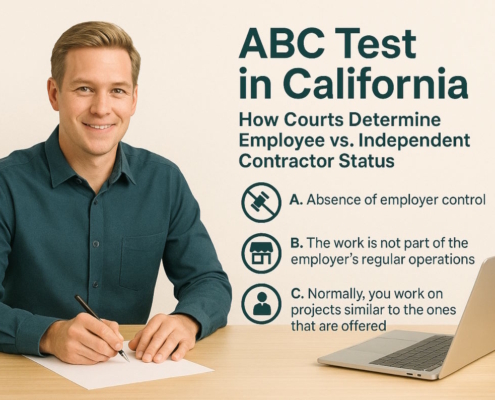How is equality in workplace different from equity?
Equity and equality may sound similar, but they really refer to different ideas, both in societal and professional settings. How can you move your company toward equity rather than equality? Let’s take a look at the distinctions between the two.
What does it mean to have workplace equality?
In a nutshell, workplace equality is providing equal treatment and opportunities to all individuals, regardless of their age, gender, color, religion, sexual orientation, or any other characteristic.
When applying for a job, it’s important to ensure that all candidates have an equal opportunity to complete work assignments. This promotes equality in the workplace.
What does workplace equity mean?
Equal opportunity for all employees and applicants is at the heart of workplace equity, as is consideration of each person’s unique set of circumstances, including any intersectional identities they may have.
Return to our recruitment scenario. With this kind of equity, everyone gets the same task, but those who need extra time to finish it, like people with dyslexia, get extra time. This levels the playing field by giving them more time to read and comprehend the instructions.
Reasons why workplace equity is important
Most workers—four out of five—want to work for an organization that promotes inclusion, equity, and diversity. By treating your staff more equitably than equally, you can improve as an employer and maintain your position as a market leader.
1. Establishing a welcoming and productive workplace
Fostering an inclusive work environment is significantly more likely if you’re constructing a really equitable workplace. When people are comfortable being themselves, they are able to express themselves fully. Their hopes, dreams, and abilities, as well as their fears, uncertainties, and concerns. In other words, an environment where all employees feel safe expressing themselves openly and honestly.
Greater output is another, virtually inevitable, result of a welcoming and equal workplace for all employees. That’s because taking into account people’s unique requirements makes them feel valued and gives them the confidence to give their all. Plus, they have the tools they need to advance in their chosen field.
2. Different points of view foster creativity
When everyone has a fair chance to succeed, people are more likely to speak up and share their thoughts in group settings. In order to solve problems and inspire new ideas, it is helpful to look at problems from several angles.
Picture this. Your boss has just given a presentation outlining the team’s strategy for next year, and you’re having trouble listening. There are a number of short videos in the presentation that do not have closed captions. Because of this, it is exceedingly difficult for you to comprehend the crucial elements of the plan, much less express your opinion about it.
On the other hand, if you understand the plan, you can offer a different point of view and give suggestions.
3. Staff retention rate
Employee turnover is 22% lower for companies that value diversity and inclusion. Employees are more invested and loyal to their companies when they work in an inclusive, fair, and productive workplace.
Taking the next step: How to achieve workplace equity rather than equality
Equal opportunity and treatment may seem like a reasonable policy at first, but it won’t help your staff thrive if you don’t take into account their unique requirements. To begin making changes to more equitable procedures at your company, consider the following:
- Think about the several phases of an employee’s life cycle
To begin organizing your efforts, it is helpful to look at your employee life cycle. Consider the following:
- From first interest to satisfied departure, how do you see fairness and equality manifesting across the employee life cycle?
- In what ways can you ensure that everyone has a fair chance to participate? For instance, think about the many policies of the firm, possibilities for learning and development, onboarding, and recruitment.
- Regarding our own personnel management strategy, one part of it is taking a holistic view of the individual. What makes them unique are their abilities, interests, goals, and passions. The result is substantially greater equity.
Qualifications from colleges and universities, for instance, are excellent, but they tend to place an exclusive emphasis on degrees and certificates, ignoring the many other forms of lifelong learning, such as volunteer work.
According to Amy Goldfinger, Walmart’s SVP of Global Talent, Workforce Strategy, and OD, we want to make sure that we’re taking into account the full person going forward.
- Ask for feedback
Get the word out by asking current and former employees and candidates how they felt about the people experience at your company and the recruitment process in general.
Once again, organize your feedback-gathering activities according to the different stages of your employee life cycle. Here are few ways to accomplish this:
- Assorted survey methods
- Focus groups for employees
- Developing an employee listening approach.
Make sure your survey is available to people before you do anything else. Your survey vendor should be able to tell you how they make sure their surveys are accessible. Do they, for instance, make use of text alternatives for web content that isn’t text-based? Can I make the text bigger? Take a look at web accessibility standards before making your own surveys.
You will then be able to proceed with the survey. Here are some questions that can help you understand how your organization deals with equity across the employee life cycle:
Please indicate your level of agreement or disagreement with each of the following claims using the ratings from 1 (strongly disagree) to 5 (strongly agree):
- All employees are aware of [name company]’s learning and development program and how to access it.
- At [name company], we believe in creating an inclusive environment where people of all ages, races, genders, and backgrounds can thrive.
- At [name firm], I feel like I have the support I need to grow professionally.
Although the samples of questions here are from the growth phase of an employee’s life cycle, you can easily change their wording to fit any other phase.
- Hone in on wage parity
Equity manifests itself in many ways, but perhaps the most obvious is pay equity. The fundamental principle of pay equity is, in a nutshell, that workers should receive equal compensation for equal work. This means that each function requires the same amount of effort and skill.
For instance, unless there is a valid justification for a disparity, a corporation should pay its men warehouse operators and female clerical assistants the same wage. Qualifications and length of service are two factors that could justify salary disparities.
Pay equality is critical for two reasons: first, you should pay your employees fairly, and second, you should follow all applicable local rules and regulations.
The results of a pay equity analysis can shed light on your current situation in this area. By doing so, you may identify the holes and devise plans to fill them.
Not asking applicants about their wage history is another option. This is already illegal in a number of US states. Women who change jobs saw a 6.2% rise in compensation and non-White people a 5.9% increase, according to research on the effects of salary history restrictions.
- Create a wide pool of potential leaders
Diversity in leadership and management is an important first step toward a more equitable workplace. Here are a few effective approaches:
- Achieving a smooth transition
- Designing unique strategies for leadership growth
- College recruiting with a focus
- Mentoring
- Introducing self-directed teams
But an important comment needs to be made here. There is a little more complexity to all of these things, even though they sound great in theory. Organizations still frequently have fewer diverse leadership groups due to bias, managers evading performance systems (therefore undervaluing members of underrepresented groups), and ineffective grievance procedures.
For instance, according to a Gartner poll, 88% of DEI leaders feel that their organization’s succession and promotion processes are biased.
One way that some businesses are addressing this is by looking at current employees and identifying those with leadership potential. They use 360-degree feedback to choose future leaders, rather than trying to find someone who is similar to the departing leader and taking the manager’s perspective into account.
Another trend is the elimination of superfluous educational requirements and the replacement of them with skills evaluations. This helps companies to accurately predict who will be their successors.
- Find a way to quantify fairness and monitor development
In order to develop an equitable company, it is crucial to monitor your progress. Get some measures in place to see how good (or bad) you are doing. Several options are available to you:
Use equity metrics that look like this based on the phases of the employee life cycle:
- # of applicants who feel their dignity and worth are valued and respected during the hiring process.
- % of new hires who report feeling valued, respected, and treated fairly by management.
- % of workers who feel their company treats them with dignity and respect when discussing prospects for professional growth and job advancement.
- The percentage of workers who are satisfied with their pay and benefits in relation to their position, level of experience, and the market average.
In order to inspire your People Team and make your goals more attainable, SMART goals are a great place to start.
“Achieve 80% candidate satisfaction by year’s end in terms of treating them honestly, equitably, and with respect throughout the recruitment process,” as an example.
You can use the data to fine-tune your equity initiatives and keep creating a more equitable company.
In sum
A lot of work has to go into creating a fair workplace. Neither is it a one-and-done deal. In reality, it’s a cycle that never ends: collecting input, making adjustments as needed, and then starting all over.
Becoming an equitable employer, when executed successfully, allows you to create an inclusive workplace where your employees can flourish, which in turn helps your organization retain its staff for longer and enjoys the benefits of increased productivity.































